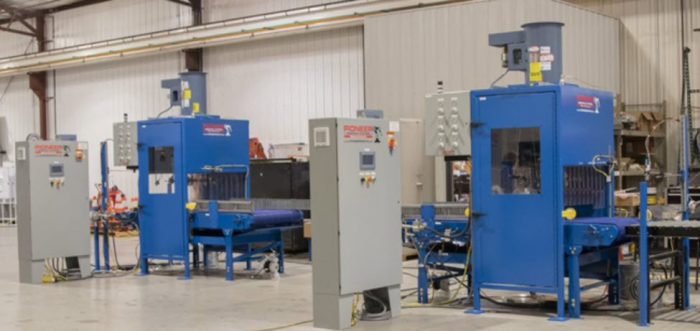Customer, Challenge & Risks

Solution
The customer found us through an internet search for robotic integrators, which led them to our website, where they discovered our capabilities, along with our demonstrated industry experience and knowledge. After reviewing the process in detail and visiting a similar facility in production, our team was able to put a detailed proposal together. We came to a final concept and firm proposal through a series of quote revisions; we captured the entire scope of the project while staying within our customer’s budget.
From our expertise in paint, dispense, and spray applications – both automated and robotic, gave us a firm understanding on how to overcome all the customer’s obstacles. As a FANUC Authorized System Integrator, the customer first approached this project as robotic application since it proved successful in their European facilities. Due to the increased line speed in North American facilities, robots were not a feasible solution to align with their specific process.
The customer reached out and was put in contact with our sales team to begin reviewing their application and gather the necessary information to build an accurate quote. The customer provided a detailed RFQ including concept and specifications. Our team was able to create a simulation based on the customer information provided; determining multiple robots would be required to meet cycle time, which would greatly increase the footprint and budget of the project. The decision was made to pursue a non-robotic option that could effectively spray each part and accommodate the vast array of part styles at random. Due to a company-wide initiative to standardize controls across all facilities, we were requested to use Siemens controls, which our team was able to successfully implement. A customer run-off was included at the time of the order where the customer is invited into our facility to review a production style run, request any final changes, and sign-off on the systems before shipment. The facility where the system would be installed had sufficient resources to install and commission the booths and controls for production. The system was plug and play since the machine was production ready on our floor, then disassembled, and carefully packed for shipment. Our team provided a detailed list of assembly and startup instructions; in conjunction with training at the time of run-off to familiarize the engineers to properly train their team of operators that would be running the machines daily.
Outcomes of Success
Mechanical Design and Engineering
PLC & HMI Programming
Request a Free Consultation Call
Contact us today to talk to an automation expert about your unique challenges. We take the time to listen and will help you to assess your options. From there, we’ll set up a free consultation to visit your operation and see your challenges first hand. There is never an obligation. We are just passionate about helping manufacturers solve their problems with robotics and automation.





